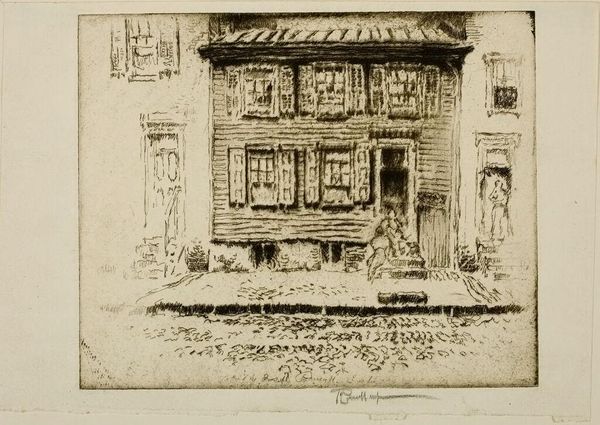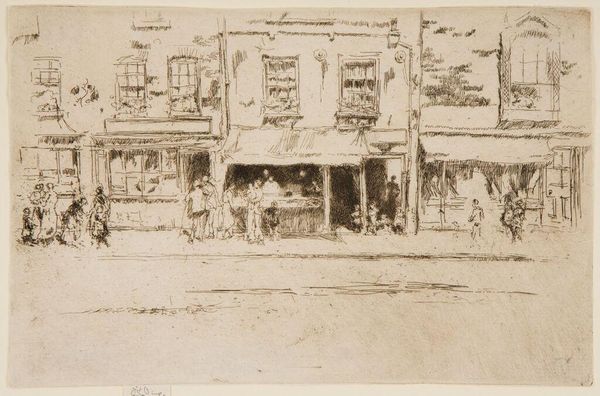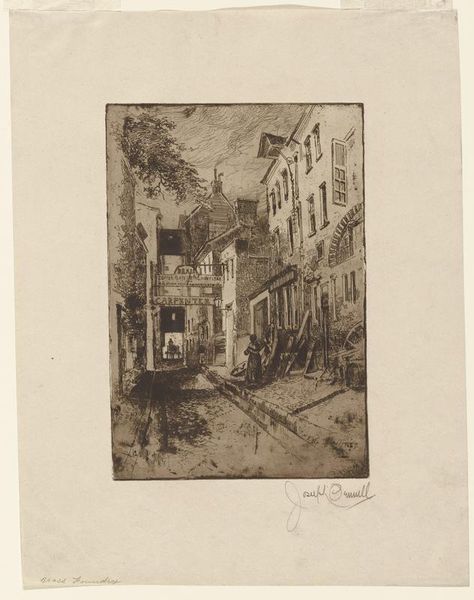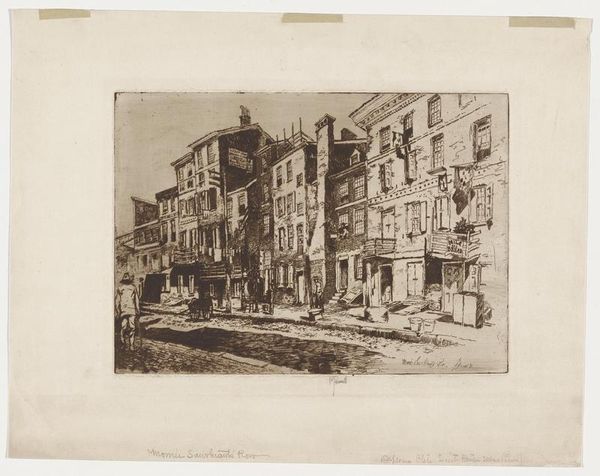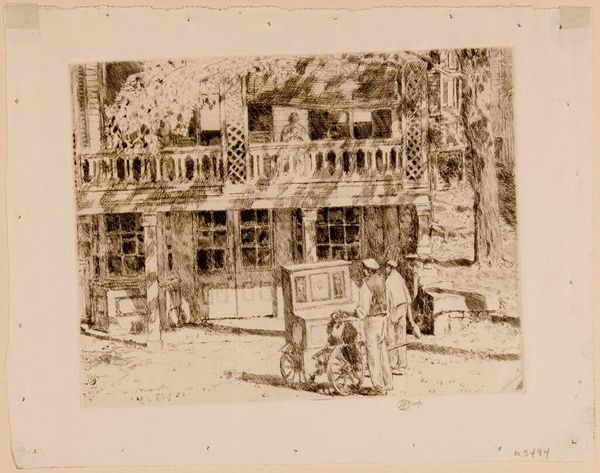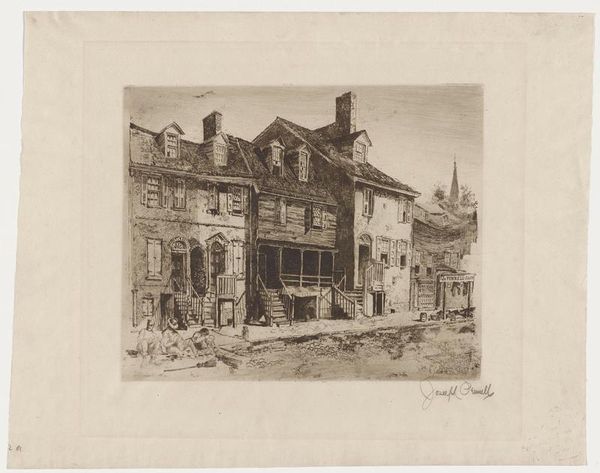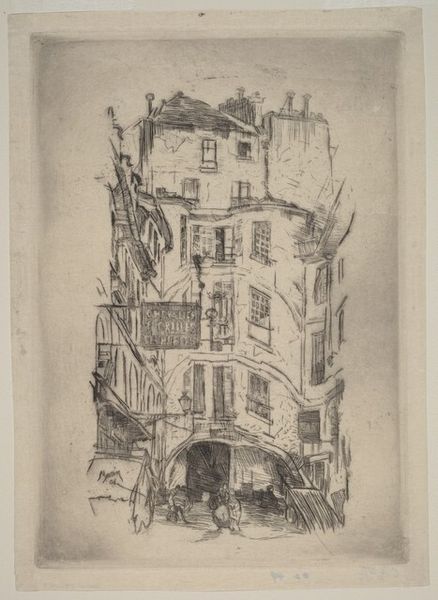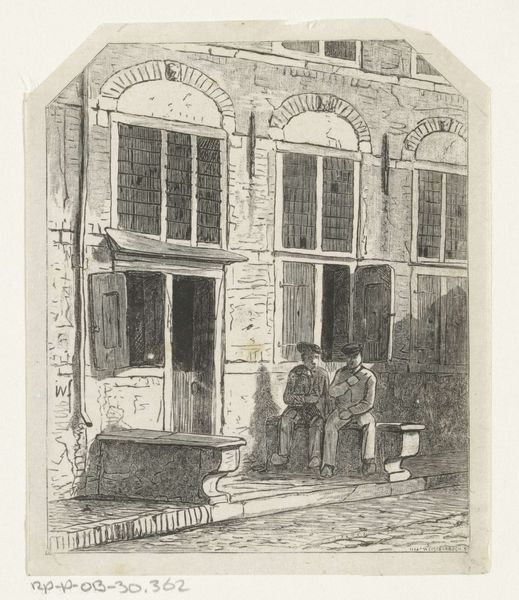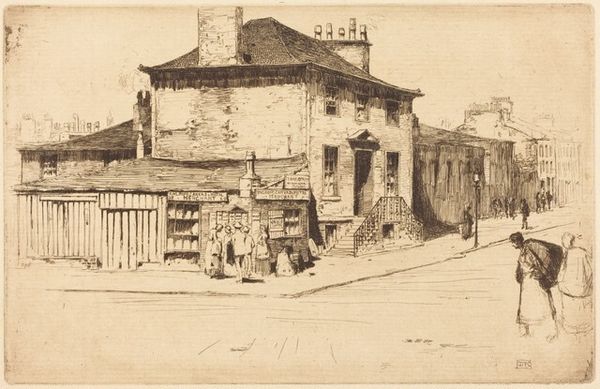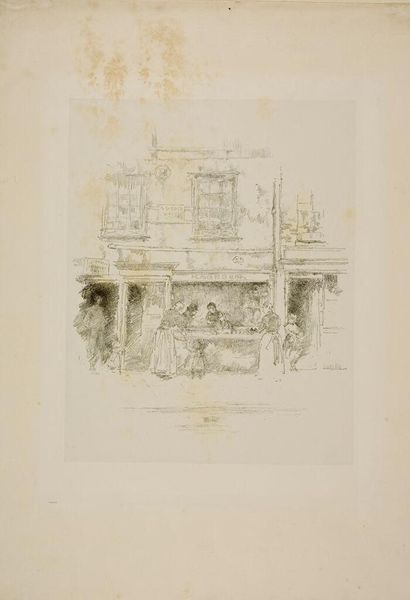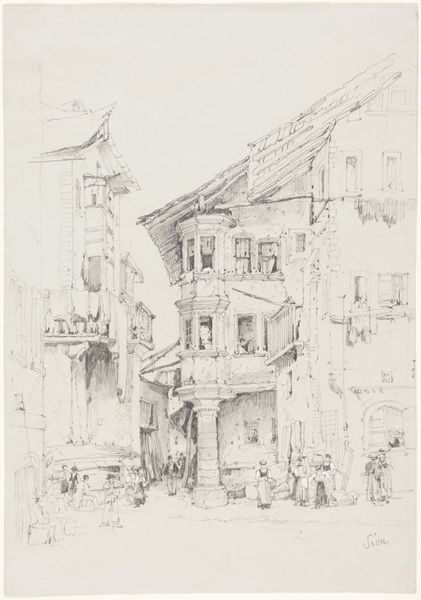
print, etching
# print
#
etching
#
landscape
#
etching
#
united-states
#
cityscape
Dimensions: 5 3/8 x 7 3/4 in. (13.65 x 19.69 cm) (plate)6 3/4 x 9 3/16 in. (17.15 x 23.34 cm) (sheet)
Copyright: No Copyright - United States
Editor: We're looking at Joseph Pennell's etching, "Walt Whitman's House," from 1924, currently at the Minneapolis Institute of Art. It’s a rather delicate rendering; the soft grays and hazy lines almost feel dreamlike. What do you make of it? Curator: What strikes me is the emphasis on the materiality of the house itself. Note how Pennell meticulously renders the clapboard siding, really foregrounding the physical structure of the building, as opposed to imbuing it with some grand, romantic aura often associated with artists’ homes. How do you see that playing out in this piece? Editor: Well, there's a kind of unglamorousness to it, maybe? It’s not idealized, which does bring attention to the sheer… ordinariness of its construction. Is Pennell perhaps suggesting something about Whitman's own values, relating to labor and the common man? Curator: Exactly! Think about etching as a medium: It's a labor-intensive, almost industrial, printmaking process. By choosing etching to depict Whitman’s modest dwelling, Pennell links the physicality of Whitman’s home to the processes of its creation, its availability as affordable housing. What if he'd used photography instead? Editor: That makes perfect sense. Photography could create distance and seem objective. The printmaking emphasizes process and craftsmanship! So, seeing this etching isn't just about looking at the house, it’s about understanding the values and work it represents, and even about the process that produced it as an artwork, connecting artistic labour and production to social messages. Curator: Precisely! This piece becomes a commentary not only on Whitman but on the very act of representation and consumption, encouraging us to examine how meaning is materially produced and reproduced. Editor: That's changed my perspective. It's not just a quaint landscape anymore; it's a statement on production, labor, and cultural significance embedded in materials. Thank you.
Comments
No comments
Be the first to comment and join the conversation on the ultimate creative platform.
